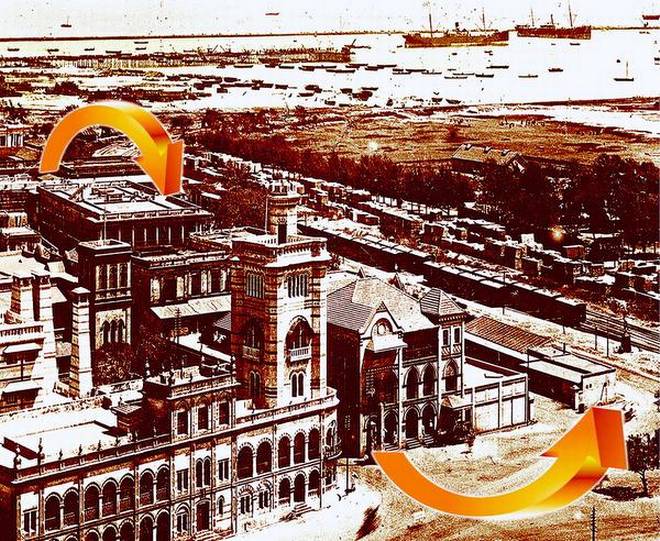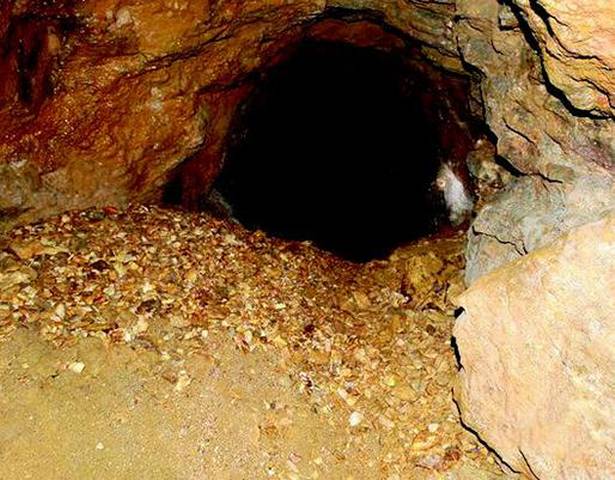The last of the great British commercial names of the South still in business, Parry & Co, now Indian owned, has a curious historical sidelight that had its beginnings 150 years ago. It’s a story pointing to the firm’s obsession with gold in South India, an item few who know the Parry story would associate with its hard-headed business approach from its founding in 1788.
It was a few years before the lure of gold drew Parry’s to it in the 19th Century. The story of that gold began with the coffee blight ruining the planters in the Nilgiris and those who did not give up and go ‘Home’ frantically searching for alternative means of sustenance. Two of them were Australians who had been miners and were planting in the Wynaad near Gudalur. There’s gold in them ther’ hills, they announced in 1868, and the trickle that followed them turned into a gold rush.
The rush began in 1879 following a positive report of gold in the Nilgiris-Wynaad that Bough Smyth, an Australian mining engineer, had submitted to the Government of Madras. But Parry’s were ahead of him. In 1874, the South India Alpha Gold Company was promoted with a capital of £100,000 and Parry’s became its Managing Agents. This was followed by Parry’s seeding the Devala Central Gold Mining Company.
Estates that were being sold for virtually nothing now found their prices sky-rocketing, going for anything between £70 and £ 2600 an acre, as not only planters began to dig for gold but a rash of new companies followed them. It was reported that 41 companies were floated in England with a total capital of £5 million and 44 companies sprang up in Mysore and the Wynaad with a total capital of ₹5,50,000! And the ‘engineers’ they employed, one report has it, were “a quondam baker and a retired circus clown”. Prospectors like these made Devala and Pandalur, near Gudalur, boom towns. Hostelries sprang up, Devala even got a magistrate and Pandalur a racecourse!
Crushing began in 1881 and when one of the biggest companies reported to London that it had found four ounces of gold per ton, investments went through the roof. A few months later it reported that 19 tons had yielded two pennyweights of gold. And the crash began. In 1883, Government reported that the gold mining enterprise in the Wynaad had “almost collapsed”. By the next year, it had collapsed altogether. An 1875 newspaper from as far away as New Zealand had to eat its words: It had predicted “Ooctacamund, the delightful recherché sanatorium on the Neilgherries is to be the new bustling Ballarat (once Australia’s gold mining heart)… There is sure to be an exodus from Melbourne to Madras.” If the Australians had continued coming, they would have found Devala and Pandalur ghost towns. But it must also be stated that were enough traces of gold found to keep prospectors optimistic; one company in 1884 extracted 363 ounces of gold, another over a couple of years found 1174 ounces – the former valued at ₹16,500, the latter at £4500 – a pittance considering the investment.
You would think that with all this experience a company like Parry’s would think twice about gold. But when a prospector called TB Cass came to Parry’s in 1902 with a mining licence in the Nizam’s Hyderabad, Parry’s began sighting gold again. A few years later it floated the Indian Minerals Exploration Company which began operations in 1907. The losses were ₹5 lakh when the company was wound up in 1910 after winding down from 1908, all Parry getting out of it being an almirah that for years remained in Parry’s headquarters!
But Parry’s had not done with gold. A couple of years later, two South African miners turned up at Parry’s Calicut office with gold they said came from the Malabar rivers into which it would have been washed from the Wynaad. And in 1913 Parry’s formed the Pactolus Dredging Syndicate. That was washed away in 1913. Next, in 1916, a Parry’s sugar factory near Vizagapatam reported that it had found gold traces when boring for water. Could they secure the mining rights? A Director replied, “Quite interesting, but I sincerely hope we will not put money into it or even have an interest again in a mining venture.” Before and after, the firm has stuck to green gold (sugarcane and tea) and black gold (manure).
___________________________
A search for a doctor
They still keep finding this column from abroad, this time my correspondent being a Dr David Dance from the UK. He is trying to trace the descendants of a Dr CS Krishnaswami who worked in Rangoon, c. 1911. Working with the Pathological Laboratory there, Assistant Surgeon CSK had with his Chief, Dr Alfred Whitmore, presented a paper on a then new disease called Melioidosis (later Whitmore’s Disease) that D. Dance has been working on for the past 30 years. Dr Dance writes, “I have a fair bit on Whitmore but not Krishnaswami, who I would think returned to Madras on retirement.” Krishnaswami did, for I find in a book written by Burma-born Lakshmi Sundaram that a Dr CSK, who’d been in Burma, used to regularly visit her father who had returned to Madras on retirement. Dr. Dance (David.d@tropmedres.ac) wonders whether any of Dr CSK’s descendants will see this appeal and get in touch. The Doctors Whitmore and CSK had published their findings in the Indian Medical Gazette in July 1912.
__________________________
The chronicler of Madras that is Chennai tells stories of people, places, and events from the years gone by, and sometimes from today
__________________________
source: http://www.thehindu.com / The Hindu / Home> History & Culture / by S, Muthiah / April 23rd, 2018

